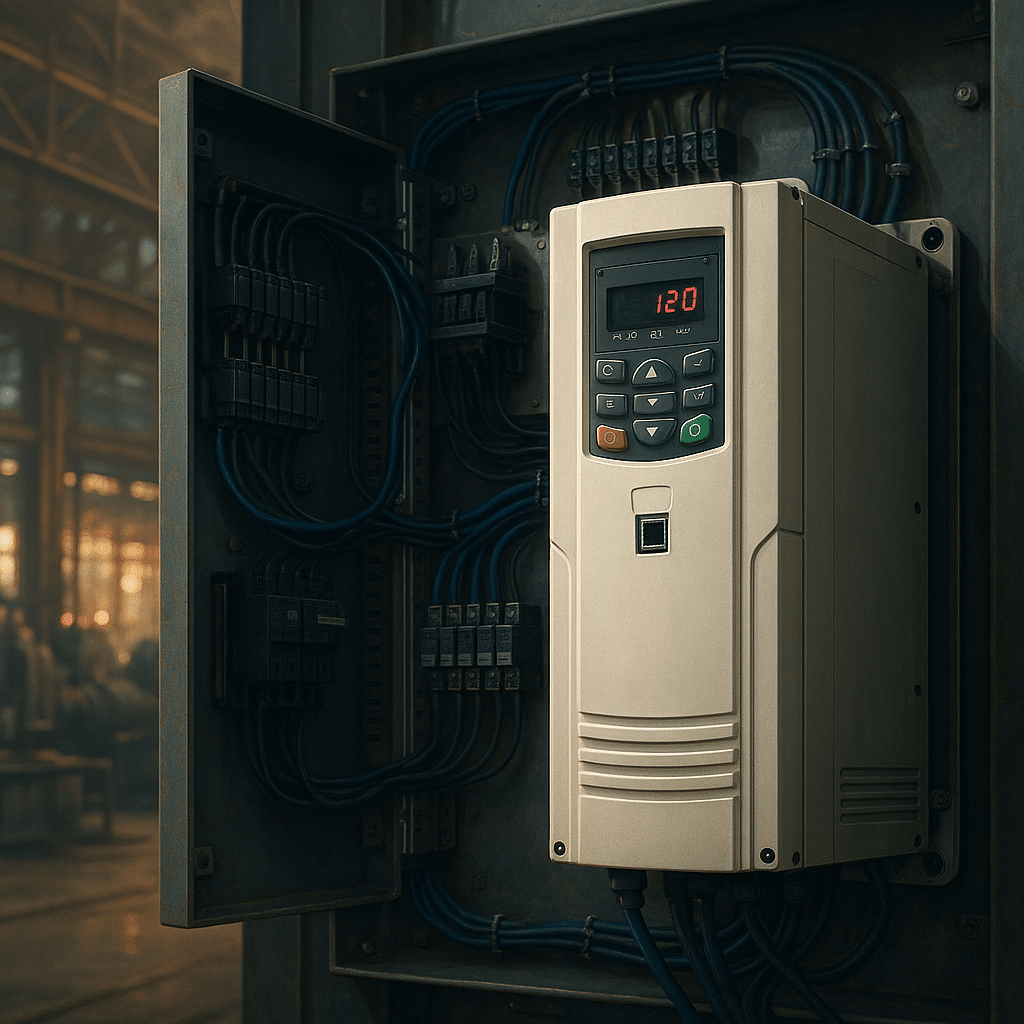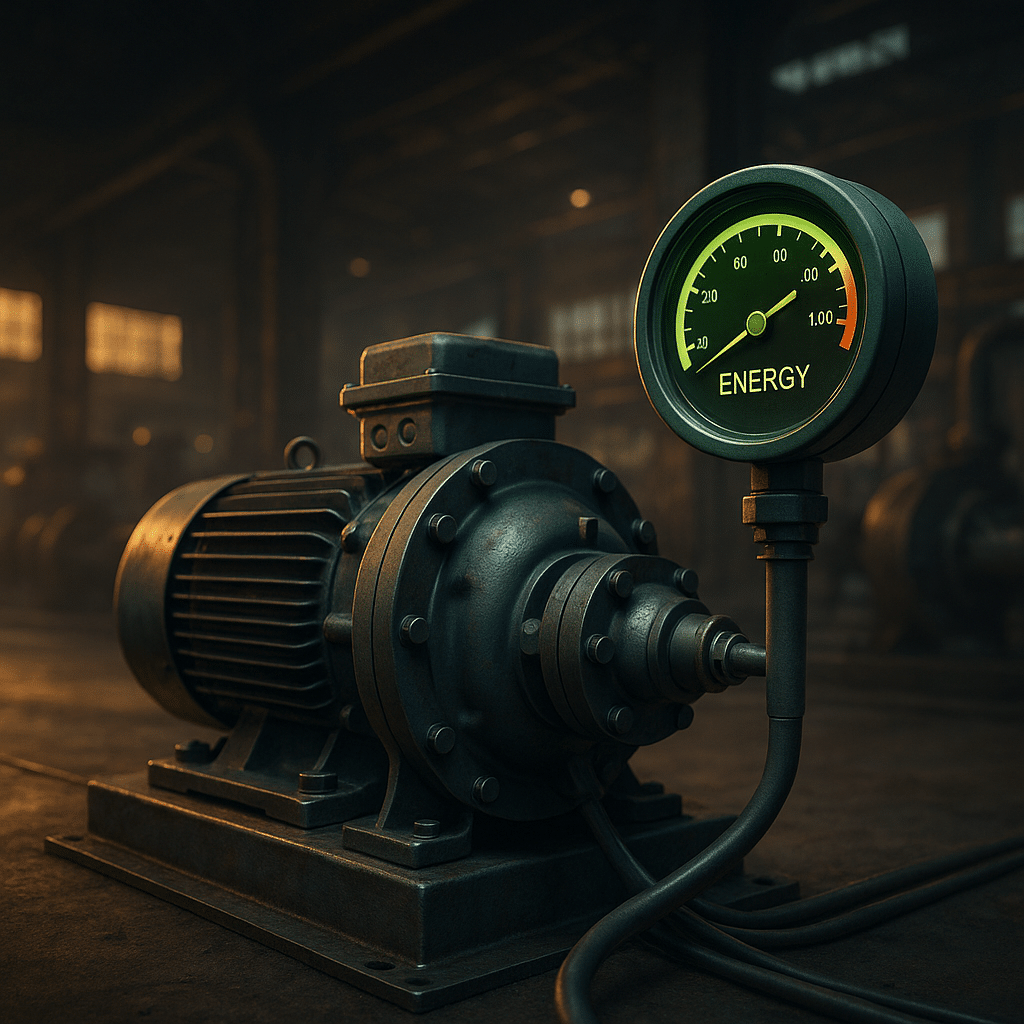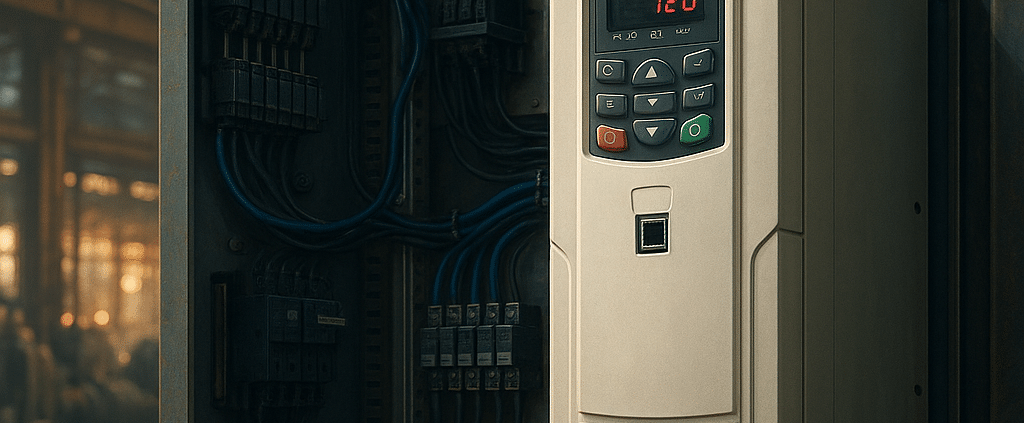VFD Drives: Fundamentals, Applications & Best Practices
Estimated reading time: 5 minutes
Introduction
Variable frequency drives (VFD drives) have become the default method for controlling three‑phase AC motors. By adjusting both voltage and frequency, a drive lets the motor deliver exactly the speed or torque a process needs instead of running flat‑out and wasting power. According to the U S Department of Energy, slowing a centrifugal fan or pump by just 20 % can cut energy use roughly 50 %. Because motors consume more than 50 % of global electricity, the opportunity is enormous. In this article we look at how modern VFD drives work, common pitfalls, practical solutions, and which products from ABB, Eaton, Hitachi, Lenze and Yaskawa might fit specific applications.

Why Matching Speed To Need Matters In VFD Drives
First, consider the “affinity laws.” For centrifugal loads, power varies with the cube of speed. Therefore, a modest speed reduction via VFD drives slashes kilowatt demand, trims peak electrical demand fees and extends mechanical life. Moreover, the soft‑start inherent in a drive eliminates high inrush current, so upstream breakers and generators can be smaller. Beyond energy, drives provide built‑in motor protection, under‑voltage monitoring and fault history, turning them into digital guardians for critical assets.
However, variable‑speed control introduces new challenges. Fast IGBT switching causes voltage reflections that can double peak voltage at the motor terminals. If the cable run is long or the motor is not inverter‑duty, premature winding failure is likely. Similarly, high‑frequency common‑mode voltage may induce bearing currents that pit races. Finally, all PWM drives inject current harmonics that can violate IEEE 519 limits if many large units are operated in parallel. The following sections outline proven solutions.
Motor Compatibility & Cable Reflection Solutions
Modern inverter‑duty motors carry insulation rated for at least 1600 V peak and often include an Aegis grounding ring. When a legacy motor must be reused, keep the motor cable under 50 m (150 ft) or add a dV/dt or sine‑wave filter. ABB’s ACS880 series and Yaskawa’s GA800 both offer integrated filter options that clip voltage spikes at the drive terminals, protecting insulation while maintaining efficiency. In food‑grade or wash‑down areas, choose drives in NEMA 4X / IP66 enclosures such as the ABB ACS580‑04 wall‑mount unit.
Mitigating Bearing Currents in VFD Drives
Because VFD drives switch thousands of volts per micro‑second, shaft voltage builds through parasitic capacitance. Once film voltage exceeds ~20 V, every rotation discharges through the bearings, producing electric‑discharge machining (EDM) damage. Practical counter‑measures include grounding rings, insulated bearings, symmetrical shielded cable and common‑mode chokes. Hospitals routinely add grounding rings to air‑handler motors and report elimination of premature failures. Eaton’s DG1 family has a factory grounding‑ring kit that snaps onto the drive output terminals for quick installation.
Harmonic Distortion & Power‑Quality Compliance
IEEE 519‑2014 limits current and voltage distortion at the point of common coupling. Three strategies dominate:
- Add impedance – 5 % line reactors reduce THD roughly 35 % and cost little.
- Multi‑pulse rectifiers – 12‑pulse or 18‑pulse arrangements cancel characteristic harmonics without active electronics.
- Active front ends (AFE) – IGBT rectifiers actively shape current and even allow full regeneration.
ABB’s Ultra‑Low Harmonic ACS880‑31 guarantees <3 % iTHD, while Yaskawa’s U1000 matrix drive provides near‑sinusoidal input current without a DC bus. Where budgets demand passive solutions, Lenze’s i550 Protec accepts an external CFX passive filter to meet <5 % vTHD.
Programming, Tuning & Functional Safety of VFD Drives
Most VFD drives include auto‑tune routines that identify motor resistance and inductance, enabling sensor‑less vector control within minutes. Always enter nameplate data and perform static or rotating tune with the load uncoupled. Next, configure application parameters: acceleration ramps, max/min frequency, PID loops and fault actions. Furthermore, integrate Safe Torque Off (STO) in accordance with ISO 13849. Both Hitachi WJ200 and Lenze i500 offer dual‑channel STO certified to SIL3. Because STO removes drive output instantly, verify the circuit during commissioning and schedule periodic function tests.

Variable Frequency Drive Product Recommendations
The table below highlights five proven families that Precision Electric regularly supplies and supports:
| Manufacturer / Series | Power Range | Notable Features | Ideal Use |
|---|---|---|---|
| ABB ACS880‑31 | 1 HP – 3000 HP | DTC control, Ultra‑Low Harmonic AFE, SIL3 STO | Critical process, regenerative cranes |
| Yaskawa GA800 | ½ HP – 600 HP | Bluetooth app, dual rating 150 % (60 s), PM motor ready | HVAC fans, conveyors |
| Eaton PowerXL DG1 | 1 HP – 1250 HP | Active Energy Control, Ethernet onboard, IP55 | Pumps, MCC integration |
| Hitachi WJ200 | ¼ HP – 20 HP | Sensor‑less 200 % torque, EzSQ logic, compact | Packaging machines, OEM skids |
| Lenze i500/i550 Protec | 1 HP – 250 HP | Plug‑in comms, modular STO, IP66 motor‑mount | Material handling, wash‑down zones |
For detailed help selecting the correct frame size, contact our VFD repair and application team. We stock spares and offer 24‑hour repair with dynamometer test.
Conclusion on VFD Drives
When properly specified, installed and tuned, VFD drives cut energy, increase throughput and extend equipment life. Pay close attention to motor insulation, bearing protection and harmonics, and your investment will deliver payback in months, not years. Because technology moves fast, partnering with an experienced integrator like Precision Electric ensures that firmware, safety and power‑quality issues are resolved before commissioning.








